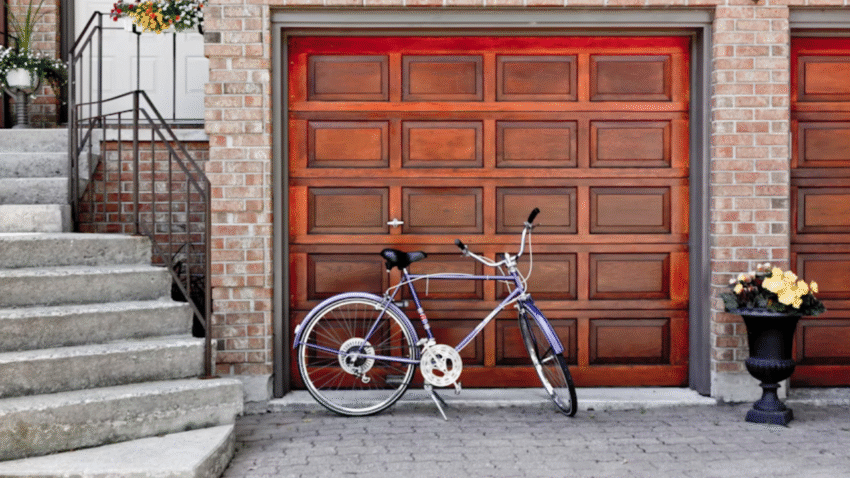Introduction
A broken garage door spring is more than just an inconvenience—it can make your door heavy, difficult, or even impossible to lift. Attempting to operate your garage door with a broken spring can damage the opener or cause injury. Learning how to replace a broken garage door spring can restore your garage door’s functionality, but it’s a task that requires extreme caution and the right tools. Garage door springs are under high tension and can be dangerous if handled incorrectly.
Why Replacing a Broken Garage Door Spring Matters
The springs on your garage door carry most of the door’s weight, making it possible to lift manually or with an opener. A broken spring means:
- The door becomes unsafe to operate and may slam shut unexpectedly.
- Extra strain on the opener can lead to motor burnout.
- Potential property damage if the door falls or closes too quickly.
Replacing a broken spring restores smooth operation, improves safety, and extends the lifespan of your garage door system. However, if you’re not confident in your skills, this is one repair best left to a professional.
Step-by-Step Guide to Replacing a Broken Garage Door Spring
Safety Warning:
Garage door springs are under significant tension. Mishandling them can cause serious injury. Wear safety goggles and gloves, and ensure you follow all safety steps. If you are unsure, call a qualified technician.
1. Identify Your Spring Type
There are two main types of garage door springs:
- Torsion Springs: Mounted horizontally above the door, these twist to provide lifting force.
- Extension Springs: Located above the upper tracks on each side of the door, these stretch when the door closes.
The replacement process differs slightly depending on the type you have.
2. Gather the Necessary Tools and Parts
For torsion springs, you’ll need:
- Replacement torsion spring(s) of the correct size and type
- Two winding bars (never use screwdrivers as substitutes)
- Adjustable wrench
- Socket wrench set
- Ladder
- Safety goggles and gloves
For extension springs, you’ll need:
- Replacement extension spring(s)
- C-clamps or locking pliers
- Adjustable wrench
- Safety gear
Pro Tip: Always replace both springs, even if only one is broken. This ensures even tension and longer lifespan.
3. Disconnect the Garage Door Opener
Unplug the opener and disconnect it from the door. This prevents accidental activation while you’re working.
4. Secure the Garage Door
Clamp the door in place using C-clamps or locking pliers on the track just above the rollers. This prevents the door from moving during the repair.
5. Removing a Torsion Spring
- Release Tension Carefully: Insert one winding bar into the winding cone of the unbroken spring. Hold the bar firmly while loosening the set screws with an adjustable wrench. Slowly unwind the spring, one quarter-turn at a time, switching winding bars until all tension is released.
- Remove the Broken Spring: Slide the springs, cable drums, and center bearing off the torsion tube.
- Install the New Spring: Position the new spring on the torsion tube, ensuring the stationary cone is secured to the center bracket. Reinstall the cable drums and slide everything back into place.
- Wind the New Spring: Using winding bars, add the correct number of quarter-turns recommended for your door size. Tighten set screws securely.
6. Removing an Extension Spring
- Release Tension: Open the door fully and secure it with C-clamps to release spring tension.
- Disconnect the Spring: Remove the safety cable (if present) and detach the spring from the track bracket and pulley system.
- Install the New Spring: Attach the new spring in the same orientation, reconnecting to the pulley and safety cable.
7. Reconnect and Test the Door
- Remove C-clamps or locking pliers from the tracks.
- Reconnect the garage door opener.
- Lift the door manually to check for smooth, balanced movement. The door should stay in place when lifted halfway. If it moves up or down on its own, the spring tension needs adjustment.
Common Mistakes to Avoid
- Mistake: Attempting repair without proper tools.
Solution: Use winding bars for torsion springs—never substitute with screwdrivers or other tools. - Mistake: Replacing only one spring.
Solution: Always replace both springs for balanced performance. - Mistake: Incorrect spring size.
Solution: Match the replacement to your door’s weight and dimensions—check the manufacturer’s specs. - Mistake: Skipping safety measures.
Solution: Wear protective gear, secure the door, and unplug the opener before starting. - Mistake: Over- or under-tightening torsion springs.
Solution: Follow the exact number of turns recommended for your door size.
Extra Garage Tips & Hacks
- Lubricate New Springs: After installation, apply a light coat of silicone-based lubricant to keep them running smoothly.
- Install Safety Cables: For extension springs, always have safety cables to prevent injury if a spring snaps.
- Schedule Annual Inspections: Even new springs benefit from yearly checks to ensure safe operation.
For more maintenance tips, see our guide on How to Lubricate a Squeaky Garage Door.
Conclusion
Replacing a broken garage door spring can restore your door’s smooth and safe operation, but it’s a job that demands careful preparation and attention to safety. By using the right tools, replacing both springs, and following each step methodically, you can get your garage door working like new.
Final Tip: If you’re not completely confident in performing this repair yourself, hire a professional—saving a little money isn’t worth risking your safety.
CTA: Bookmark this guide and keep it handy for future maintenance, whether you’re tackling the job yourself or supervising a repair.
